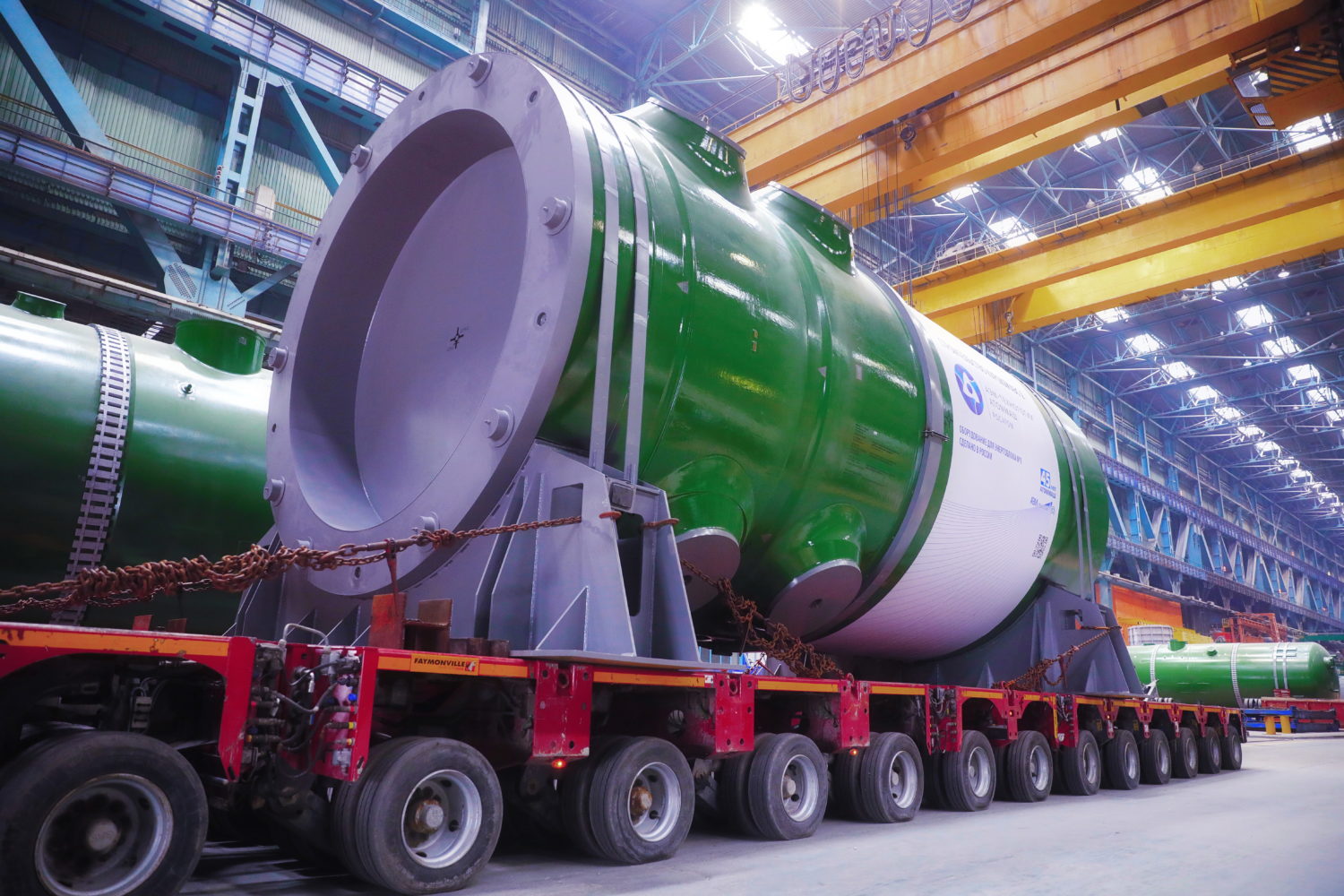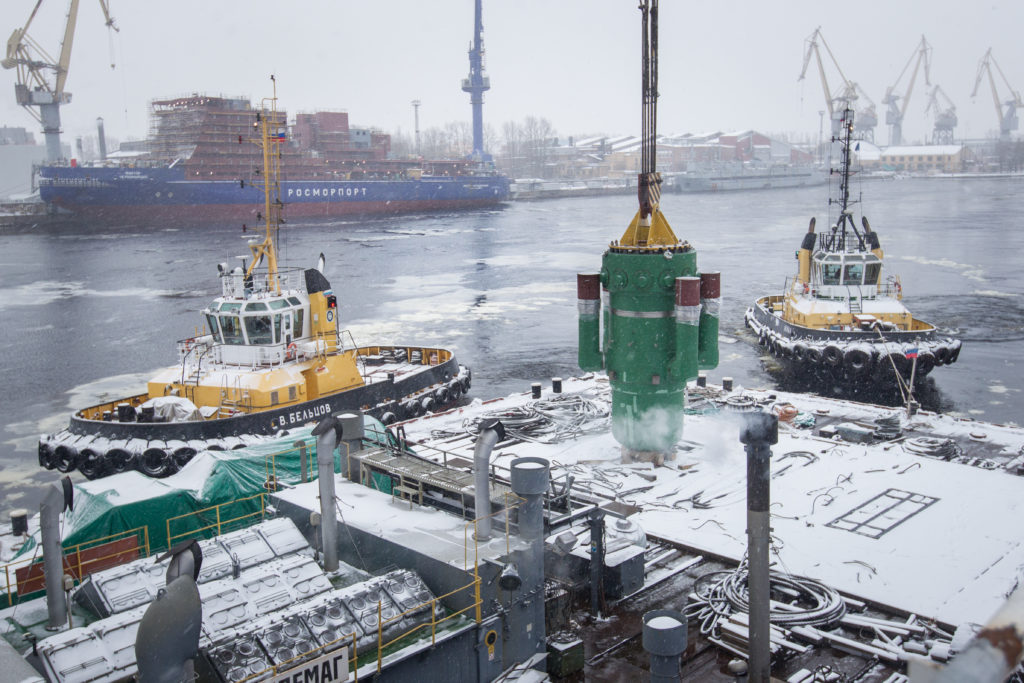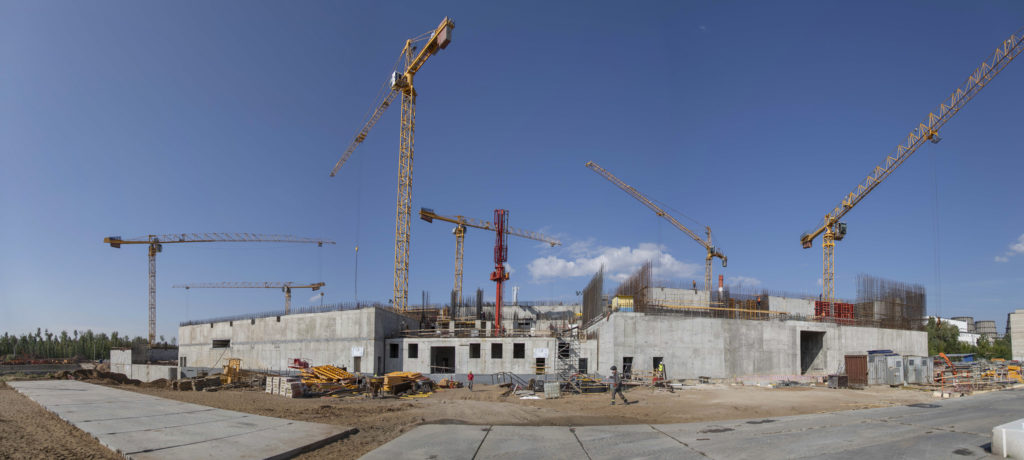
Made in Russia
back to contentsThroughout 2021, we were writing about the countries in which Rosatom operates, launches social initiatives and interacts with local communities. We would like to close the year with a story about Russia. This is where Rosatom develops and tests new technologies and then offers them to customers from all over the world.
VVER-TOI reactors
VVER-TOI stands for “Water-Cooled Water-Moderated Energy Reactor – Universal Optimized Digital” in Russian. Two power units with VVER-TOI reactors will be built at Kursk II.
VVER-TOI takes over from the AES-2006 design that was used to build reactors at Leningrad II and Novovoronezh II nuclear power plants. Each unit will have a power capacity of 1,300 MW. VVER-TOI is characterized by improved earthquake resistance, better load following, and an ability to withstand heavy hits, such as a 400-ton airplane crash. It is capable of maintaining operation in the absence of external power and water supply. Besides, VVER-TOI can run on MOX fuel.
In late November this year, AtomEnergoMash (Rosatom’s power engineering division) manufactured the first steam generator for Kursk II Unit 2. A month before, the first steam generator for Unit 1 had been delivered to the construction site. It is planned that the steam generator for Unit 2 will arrive at the site by the end of the current year.
Steam generators for VVER-1300 reactors feature a specific design – they do not have a header, which was previously placed at the upper part of the steam generator. Steam comes out of a single nozzle that is directly connected with the steam pipe. These design solutions improve the overall reliability as they decrease the number of welded seams in the steam generator. A higher steam generating capacity (1,652 tons/hour vs. 1,200–1,602 tons/hour in VVER) secures a higher power capacity of the reactor unit.
This September, a reactor pressure vessel (RPV) for Unit 1 was delivered to the Kursk II construction site. The number of welded seams in the pressure vessel of VVER-TOI reactors is also smaller if compared with VVER-1200 (four vs six). Since there are no welded seams in the core, the RPV service life can be extended for another 40 years after the initial 60-year period is over.
RITM-200 SMRs
Russia is the first country in the world to have built a small modular reactor (SMR) in the 21st century. It is Akademik Lomonosov, the world’s only floating nuclear power plant.

This year, Rosatom has intensified its R&D efforts in SMRs. In particular, a decision was made that Baimsky GOK (a mining and processing plant that will develop one of Russia’s largest gold deposits Peschanka) will be supplied with power from four (three basic and one backup) upgraded floating power units (abbreviated as “MPEB” in Russian for “modernized floating energy unit”). Their key difference from Akademik Lomonosov is another reactor, RITM-200S, to be used instead of KLT-40. The upgraded units will have two RITM-200S reactors with a power capacity of 55 MW each. The power of the turbine, which is designed specifically for MPEBs, will be increased from 50 to 58 MW. The upgraded power units for Baimsky GOK will not be used to produce heat as it will not be needed. Engineering design for MPEB will be completed in the first quarter of 2022.
Later, it will be improved to create an optimized floating power unit (abbreviated as “OPEB” in Russian for “optimized floating energy unit” ) that will differ from MPEB in smaller dimensions and a new setup. OPEB will also use RITM-200S reactors but can be equipped with a more powerful 200 MWe RITM-400 reactor. It is developed at OKBM Afrikantov (part of Rosatom) for the Leader icebreaker. Construction of a combined SMR for the production of electric power and heat is discussed with the government of Kamchatka in Russia’s Far East, while its tropical version is negotiated with some island countries.
Besides, Rosatom and the government of Sakha (Yakutia) are working on the project to build an onshore SMR with a RITM-200 reactor in the town of Ust-Kuyga. Its major power consumer will be a nearby gold mine, Kyuchus. Consumption of at least 35 MW of electric power was a condition of the tender for the development of Kyuchus gold deposit.
MBIR
MBIR is a multi-purpose fast breeder reactor under construction in Dimitrovgrad (Ulyanovsk Region, Russia). For now, the reactor has been concreted to Level +13, and a slab installed for the foundation of the reactor pit. MBIR will be used to conduct research, and Russian scientists already know what it will be. The scope of research will cover development of new reactor concepts, closing of the nuclear fuel cycle, fundamental studies on cold and ultracold neutrons, and tests on materials and components for the reactor core of new reactors.

MBIR is intended to be an international research collaboration. According to Director General of Rosatom, Alexey Likhachev, negotiations are underway with China and France as potential collaborators. He also invited Serbia to take part in the project. An international consortium for MBIR-based research was established to give everyone a chance to participate in research programs.
Breakthrough
Perhaps, this is one of Rosatom’s most ambitious current projects. Proryv (Russian for “breakthrough”) is a project aiming to close the nuclear fuel cycle. No one has yet attempted to develop a lead-cooled fast neutron reactor that can use mixed uranium plutonium nitride (MUPN) fuel.
The entire facility will consist of a BREST-OD-300 (the acronym stands for the Russian ‘Naturally Safe Lead-Cooled Fast Reactor – Test Demonstration’), a fuel fabrication and refabrication unit, and a fuel reprocessing unit.
In late November, concrete pouring for the basemat of BREST-OD-300 was completed in Seversk (Tomsk Region). Work is currently underway to build external walls of the containment building.
Rosatom is also working on other advanced reactor technologies, such as microreactors, space nuclear propulsion systems, high-temperature gas-cooled reactors, and others. We have mentioned only those that have approached their physical implementation. The principle that the Russian state nuclear corporation follows is to study and master the latest technology at home and offer a clear and tested solution to the customers abroad later. We hope we will have no fewer reasons to write about Rosatom’s projects abroad next year.
AtomEnergoMash (AEM) is Rosatom’s power engineering division and one of Russia’s largest power machinery producers providing comprehensive solutions in design, manufacture and supply of machinery and equipment for nuclear, thermal, petroleum, shipbuilding and steel-making industries. Its production facilities are located in Russia, the Czech Republic, Hungary and other countries.




